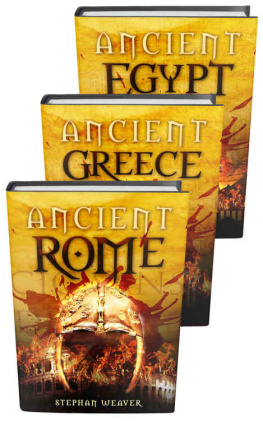Table of Contents
This book is dedicated to Baasha (Brighton Ridge Farms #A-80), the matriarch of our flock and a really neat sheep
to Dick Harward and Barb Zebbs of Wind Fall Farm in Willow Springs, Missouri, for allowing us to photograph their beautiful Scottish Blackface sheep.
and to Laurie, Cathy, Lyn, Lynn, Barbara, Marion, Kim, Dawn, Bernadette, Kris, Melissa, Connie, Kelly, Kathy, Liz, Lisa, Michelle, and all the other shepherds at the Hobby Farms Sheep E-mail discussion group. Thanks for your help, ladies!
INTRODUCTION
Why Sheep?
Sheep are to hobby farms as diamonds are to gold: they make a good thing better. Be they pets or profit makers, sheep should be part of every small-farm scene. They are inexpensive to buy and keep, easy to care for, and relatively long lived, making them great investments. Given predator-proof fencing, minimal housing, good feed, and a modicum of daily attention, sheep will thrive. New shepherds can learn to care for sheep in a relatively short period of time, which makes them attractive even to first-time farmers. Sheep make delightful pets; theyll mow your yard, come when called, and with training, maybe even pull a cart.
Farmers looking to turn a profit in sheep can do so. Hand-tamed miniature lambs fetch respectable prices as pets. Clean fleeces from many breeds are wildly popular among handspinners. Niche-marketed lamb sells readily to ethnic and organic markets, and sheeps milk cheese is popular with gourmets around the world. In addition, raising livestock qualifies landowners for lower agricultural land tax assessments in many locales.
You may have reservations; even I havent had sheep all my life. For more than fifty years I was blissfully content with husband, horses, and dogs. Then came hobby farmsthen guineas, chickens, and an ox. I had always liked sheep, so why not give them a try? I was smitten, totally and thoroughly captivated by our first woolly pets. Now sheep are a part of me. Ive been entrusted with the care of these beautiful creatures. Im sure Ive been blessed!
CHAPTER ONE
Sheep from the Beginning
In the beginning, there were majestic wild sheep called mouflons. Hunters stalked the wily sheep to dine on their tasty flesh and to craft cozy clothing from their hides. About 11,000 years agoprobably near Zawi Chemi Shanidar, in what is now northern Iraqa hunter stopped fiddling with his spear point, kicked a log onto the fire, and said to a friend, Wouldnt it be smarter to snatch some lambs and raise them here by camp?
So humans and sheep formed an alliance. People protected sheep from wolves, bears, and mountain lions; sheep reciprocated by developing wool. About 3500 BC, women puzzled out how to weave sheeps woolly covering into fine, sturdy cloth that kept wearers toasty in the wintertime and cool under the blazing summer sun. Decked out in woolen garments, men said to one another, We dont have to stay here on the Mesopotamian plains where its always pretty warm; we could go out and conquer the world!
Sheep were already out in the world. Domestic sheep had reached parts of Europe by 5000 BC, having been carried west by intrepid Neolithic farmers. (Sheep remains have been recovered from a Swiss New Stone Age dig circa 2000 BC.) Swedish farmers began raising northern short-tailed sheep between 4000 and 3000 BC. Between 1000 BC and AD 1, Persians, Greeks, and Romans labored to develop new and better sheep. The Romans brought their revamped woollies along (a walking food supply) when they conquered Europe and North Africa; by AD 50, the Romans had erected a wool-processing plant near Winchester, England.
Historically, the greatest sheep was the mighty Merino. Some researchers think it sprang from a genetic mutation some 3,000 years ago; others believe it was developed during the reign of Queen Claudia of Spain (AD 4154). Whatever the case, income from the Spanish Merino wool trade transformed Spain into a world power and financed its New World voyages. Until the mid-eighteenth century, in fact, Spain so hoarded Merinos that it made smuggling sheep out of the country punishable by death.
When Columbus embarked on his second voyage, in 1493, he packed along big, meaty Spanish Churra sheep. He left some in Cuba and more in Santo Domingo. Their descendants trailed Cortez and his conquistadors as they pillaged their way across the New World.
This vintage European Easter card is filled with historical symbols of the season: children in traditional dress, pussy willow boughs, springtime flowers, and fluffy sheep.
Meanwhile, another wave of sheep arrived by way of the North American colonies. Fifteen years after settling Plymouth Colony, the Pilgrims purchased sheep from Dutch dealers on Manhattan Island. By 1643, there were 1,000 sheep in Massachusetts Bay Colony alone. Records show that Governor Winthrop, of the Connecticut colony, acquired a handsome flock of Southdown sheep in 1646. By 1664, an estimated 100,000 sheep called the thirteen colonies home.
Trafficking in sheep or wool was risky business. By 1698, Americans were peddling their wool abroadmuch to the consternation of the British king William III. William ultimately outlawed the production of sheep and wool in the colonies. Miscreants caught engaging in the trade had their right hands amputated.
Yet intrepid shepherds continued raising sheep before, during, and after the American Revolution. George Washington and Thomas Jefferson were inaugurated in suits crafted of pure American wool. Both presidents were, in fact, avid sheepmen. Washington raised English Leicesters at Mount Vernon; Jefferson bred English Leicester and Tunis sheep at Monticello.
During the nineteenth century, a slew of European breeds appeared on the American scene. Coveted Spanish Merinos (1808), Lincolns (1825), Cotswolds (1832), Shropshires (1855), and Hampshires (1885) arrived and flourished. In 1912, the first all-American breed, the Columbia, was developed.
Sheep in Myths
Back to the Dawn of time:
It stands to reason, considering humanitys long association with sheep, that myth and religion embrace them, too. The Egyptian sun god, Amon-Ra, was depicted as either a ram-headed deity or a sun disc with rams horns. Other ramhorned deities include the Middle Eastern great goddess Ishtar; the Phoenician sun god Baal-Hamon; and Ea-Oannes, the Babylonian god of the deeps.




















